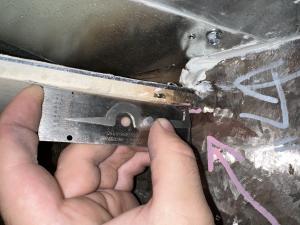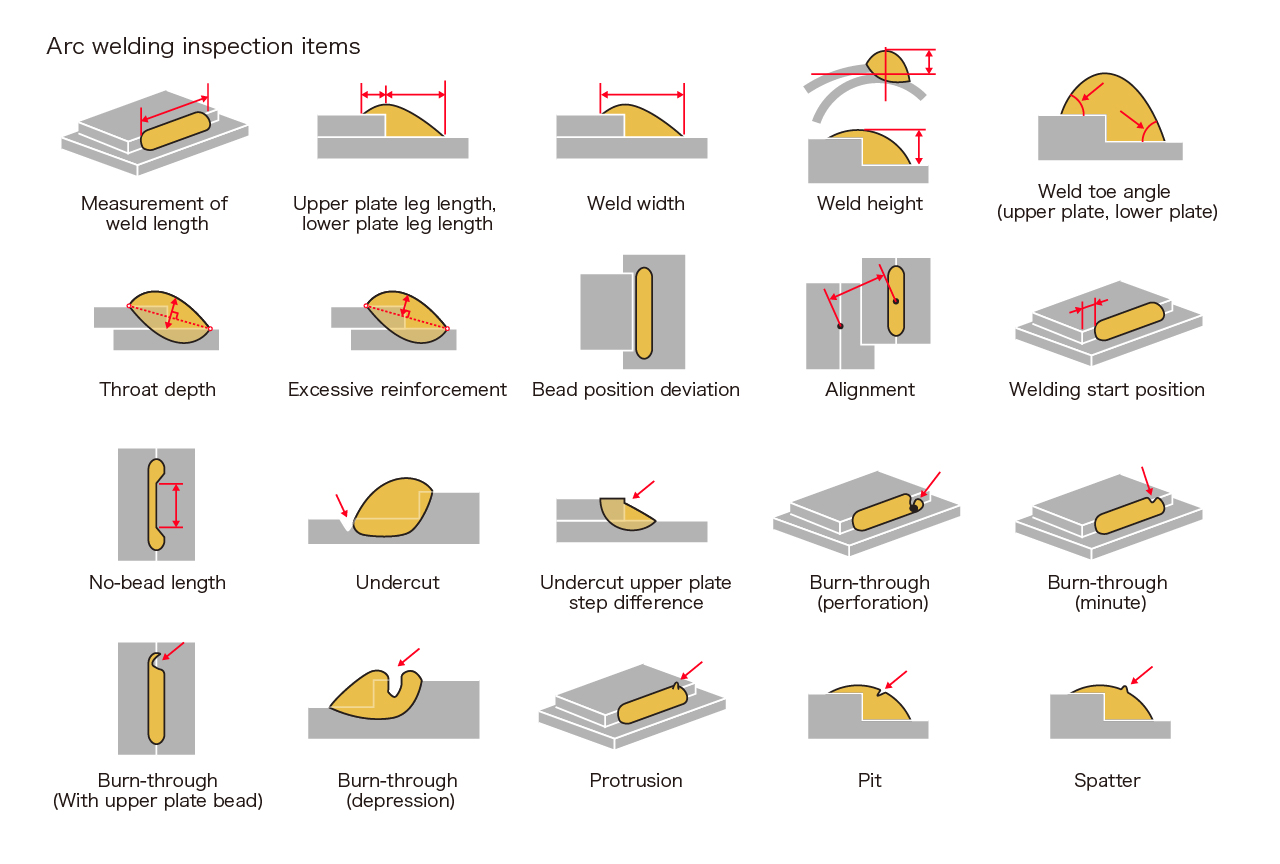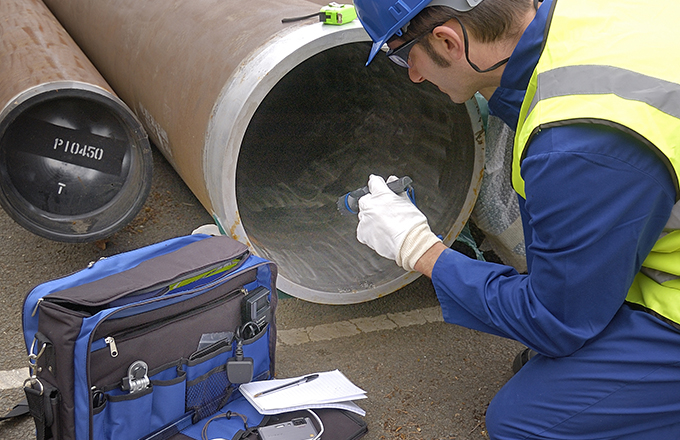Understanding the Criteria for Welding Inspection Gilbert Arizona: A Total Summary
Wiki Article
A Comprehensive Overview to Welding Inspection: Understanding Criteria, Techniques, and Best Practices for Quality Control
Welding evaluation plays a critical role in guaranteeing the structural integrity and safety of bonded parts, demanding a thorough understanding of sector criteria such as those developed by AWS and ASME. Different evaluation techniques, including ultrasonic and aesthetic screening, are utilized to find possible flaws that might jeopardize quality. Furthermore, applying ideal methods can considerably boost functional dependability and foster count on among customers. As we explore these critical components, it comes to be apparent that the implications of welding inspection expand far beyond conformity, inviting a closer assessment of how these procedures shape market criteria and methods.Value of Welding Examination
Welding inspection plays a vital duty in ensuring the stability and security of bonded frameworks. It is an essential process that confirms that welds adjust to predefined specifications, which is important in different markets, consisting of building and construction, auto, and aerospace. By conducting extensive assessments, possible issues such as cracks, incomplete fusion, and porosity can be identified early, avoiding devastating failings that might lead to accidents or costly repairs.The significance of welding inspection prolongs beyond mere compliance with regulations; it also fosters trust fund with stakeholders. Customers and governing bodies anticipate assurance that the structures they rely upon are built to hold up against functional anxieties. Moreover, efficient welding evaluation practices add to lasting longevity and efficiency of the frameworks, ultimately leading to lowered upkeep expenses.
In addition, welding assessment promotes a society of high quality within organizations, urging adherence to finest practices and continual renovation. By integrating inspection procedures into the welding workflow, firms can boost their online reputation and establish themselves as leaders in quality control. In verdict, the value of welding assessment hinges on its capacity to secure lives, ensure architectural dependability, and promote market standards, making it an important aspect of welding procedures.
Trick Market Requirements
Guaranteeing conformity with vital sector requirements is important for maintaining the top quality and security of bonded structures. Different companies establish these requirements to advertise finest techniques in welding and evaluation - Welding Inspection Gilbert Arizona. Amongst the most identified are the American Welding Society (AWS) and the American Culture of Mechanical Designers (ASME), which provide in-depth standards and specifications for welding processes and evaluation criteriaAWS standards, such as AWS D1.1 for structural welding, synopsis requirements for materials, style, and testing to make sure the honesty of welds. Similarly, ASME codes, including ASME Section IX, govern the qualification of welders and welding procedures, making sure constant top quality in commercial applications. Globally, the ISO 3834 typical stresses top quality needs for blend welding, supplying a structure for companies to demonstrate compliance with global best practices.
Conformity with these criteria not just boosts the integrity of bonded structures however likewise reduces dangers related to structural failings. Moreover, adherence to market requirements is commonly a requirement for regulative approvals and can substantially influence project specs. Ultimately, understanding and applying these crucial requirements are essential for reliable welding assessment and quality control.
Assessment Techniques Summary
Effective welding assessment depends on a selection of methods designed to examine the quality and stability of welds. These techniques can be extensively categorized right into non-destructive and devastating screening (NDT) techniques. Non-destructive screening strategies, which are commonly favored in the sector, enable for the analysis of welds without jeopardizing the honesty of the material.

Amongst the most generally made use of NDT techniques are aesthetic inspection, ultrasonic screening, radiographic screening, and magnetic particle testing. Aesthetic inspection is usually the primary step in the evaluation process, making it possible for inspectors to identify surface area blemishes and evaluate weld grain accounts. Ultrasonic screening employs high-frequency sound waves to find inner flaws and determine the thickness of welds. Radiographic testing includes browse this site using X-ray or gamma-ray imaging to reveal interior flaws, while magnetic fragment screening works for finding surface area and near-surface discontinuities in ferromagnetic materials.
Each strategy has its very own benefits and limitations, making it essential for inspectors to select one of the most proper technique based on the specific requirements of the task, the products involved, and the criticality of the welds being evaluated. This mindful choice guarantees extensive assessments and promotes security and quality criteria in welding procedures.
Typical Defects and Their Effects
A thorough understanding of usual flaws in welds is essential for maintaining architectural integrity and safety and security in welded constructions. Welding flaws can substantially compromise the mechanical homes of the joint, leading to failings that might endanger both workers and equipment.Usual flaws include porosity, which shows up as little gas pockets caught in the weld metal, deteriorating the overall framework. Cracking is an additional prevalent concern, usually resulting from quick cooling or inappropriate joint design, causing stress focus that can result in tragic failures. Incomplete blend takes place when the weld steel falls short to correctly bond with the base product, developing powerlessness that may bring about separation under tons.
Various other notable problems consist of damaging, where the weld grain erodes the base metal, and slag additions, which can prevent the weld's toughness. Each of these problems has certain effects; as an example, porosity can reduce ductility, while cracking directly impacts tensile stamina. Determining and recognizing these issues throughout inspection is vital for applying rehabilitative measures and making sure compliance with industry standards, ultimately safeguarding the structural integrity of welded assemblies.
Best Practices for High Quality Assurance
Carrying out click this link finest techniques for quality control in welding procedures is important for accomplishing optimum outcomes and decreasing issues. One critical practice is the establishment of clear welding treatments that comply with sector criteria and specifications. These procedures need to consist of detailed directions relating to product option, joint prep work, and welding methods to make sure uniformity and top quality.Normal training and certification of welding employees are additionally crucial. Proficient welders who comprehend the value of high quality guarantee are a lot more likely to generate audio welds. Furthermore, implementing a durable evaluation program, including both visual and non-destructive screening (NDT), can assist recognize problems early at the same time, permitting timely restorative actions.

Last but not least, cultivating a culture of high quality within the company urges workers to prioritize high quality in their job. By sticking to these best methods, organizations can improve the honesty of their welding procedures, inevitably resulting in boosted item quality and decreased expenses connected with rework and repairs.

Final Thought
To conclude, welding inspection plays an important function in making her latest blog certain the integrity and safety of welded structures. Adherence to key market requirements, such as those established by AWS and ASME, is vital for reliable high quality assurance. Employing various evaluation techniques allows for the identification of usual issues, therefore alleviating potential threats. By carrying out finest practices, companies can boost dependability, reduce upkeep costs, and cultivate trust fund amongst clients, inevitably adding to successful welding procedures - Welding Inspection Gilbert Arizona.Furthermore, welding examination promotes a society of quality within companies, urging adherence to finest techniques and continuous enhancement. In conclusion, the importance of welding examination lies in its capability to guard lives, ensure structural integrity, and copyright market criteria, making it a crucial aspect of welding procedures.
Amongst the most recognized are the American Welding Culture (AWS) and the American Culture of Mechanical Engineers (ASME), which supply detailed guidelines and requirements for welding procedures and inspection requirements.
Inevitably, understanding and implementing these essential requirements are essential for efficient welding assessment and quality assurance.
Efficient welding assessment counts on a variety of techniques created to analyze the quality and stability of welds.
Report this wiki page